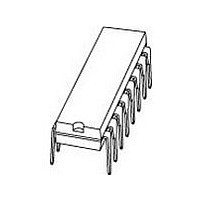TEA1062A NXP Semiconductors, TEA1062A Datasheet - Page 7

TEA1062A
Manufacturer Part Number
TEA1062A
Description
Manufacturer
NXP Semiconductors
Datasheet
1.TEA1062A.pdf
(28 pages)
Specifications of TEA1062A
Primary Target Application
Telephone Sets
Operating Supply Voltage (typ)
2.7/3.4V
Max Transmitter Gain
53.5dB
Receiver Gain (max)
32.5dB
Operating Temp Range
-25C to 75C
Package Type
PDIP
Pin Count
16
Operating Current
900uA
Operating Temperature Classification
Commercial
Mounting
Through Hole
Operating Supply Voltage (min)
2.2V
Lead Free Status / Rohs Status
Compliant
Available stocks
Company
Part Number
Manufacturer
Quantity
Price
Company:
Part Number:
TEA1062A
Manufacturer:
UTC
Quantity:
4 119
Company:
Part Number:
TEA1062A
Manufacturer:
PHILIPS
Quantity:
4 043
Part Number:
TEA1062A
Manufacturer:
PHILIPS/飞利浦
Quantity:
20 000
Company:
Part Number:
TEA1062A*
Manufacturer:
LITEON
Quantity:
1
Company:
Part Number:
TEA1062A/UTC1062A
Manufacturer:
INTEL
Quantity:
1
Part Number:
TEA1062AN
Manufacturer:
UTC/友顺
Quantity:
20 000
Part Number:
TEA1062AT
Manufacturer:
HP
Quantity:
20 000
Philips Semiconductors
Sidetone suppression
The anti-sidetone network, R1//Z
Z
earpiece. Maximum compensation is obtained when the
following conditions are fulfilled:
If fixed values are chosen for R1, R2, R3 and R9, then
condition (1) will always be fulfilled when R8//Z
To obtain optimum sidetone suppression, condition (2) has
to be fulfilled which results in:
Where k is a scale factor;
The scale factor k, dependent on the value of R8, is
chosen to meet the following criteria:
In practise Z
length. The value chosen for Z
an average line length thus giving optimum setting for
short or long lines.
1997 Sep 03
bal
compatibility with a standard capacitor from the E6 or
E12 range for Z
ensuring correct anti-sidetone bridge operation
Low voltage transmission circuits with
dialler interface
Z
Z
Z
, (see Fig.4) suppresses the transmitted signal in the
bal
bal
bal
//R8 << R3 fulfilling condition (a) and thus
+ R8 >> R9 to avoid influencing the transmit gain.
=
R9 R2
R8
------- -
R1
line
Z
------------------------ -
Z
varies considerably with the line type and
line
bal
bal
Z
=
bal
+
=
R1
R8
k Z
k
=
line
R3
=
------------------------- -
Z
line
bal
R8
------- -
R1
Z
+
line
line
should therefore be for
+
R8 Z
------------------------ -
R8
, R2, R3, R8, R9 and
R1
+
Z
bal
bal
bal
<< R3.
(1)
(2)
7
E
The balance impedance Z
suppression is present can be calculated by:
Suppose Z
5 km line of 0.5 mm diameter, copper, twisted-pair cable
matched to 600
When k = 0.64 then R8 = 390 ;
Z
The anti-sidetone network for the TEA1060 family shown
in Fig.4 attenuates the signal received from the line by
32 dB before it enters the receiving amplifier.
The attenuation is almost constant over the whole
audio-frequency range.
Figure 5 shows a conventional Wheatstone bridge
anti-sidetone circuit that can be used as an alternative.
Both bridge types can be used with either resistive or
complex set impedances. (More information on the
balancing of anti-sidetone bridges can be obtained in our
publication “Applications Handbook for Wired telecom
systems, IC03b” , order number 9397 750 00811.)
bal
XAMPLE
= 130
line
+ (820 //220 nF).
= 210
(176 /km; 38 nF/km).
TEA1062; TEA1062A
+ (1265 //140 nF) representing a
bal
at which the optimum
Product specification
















